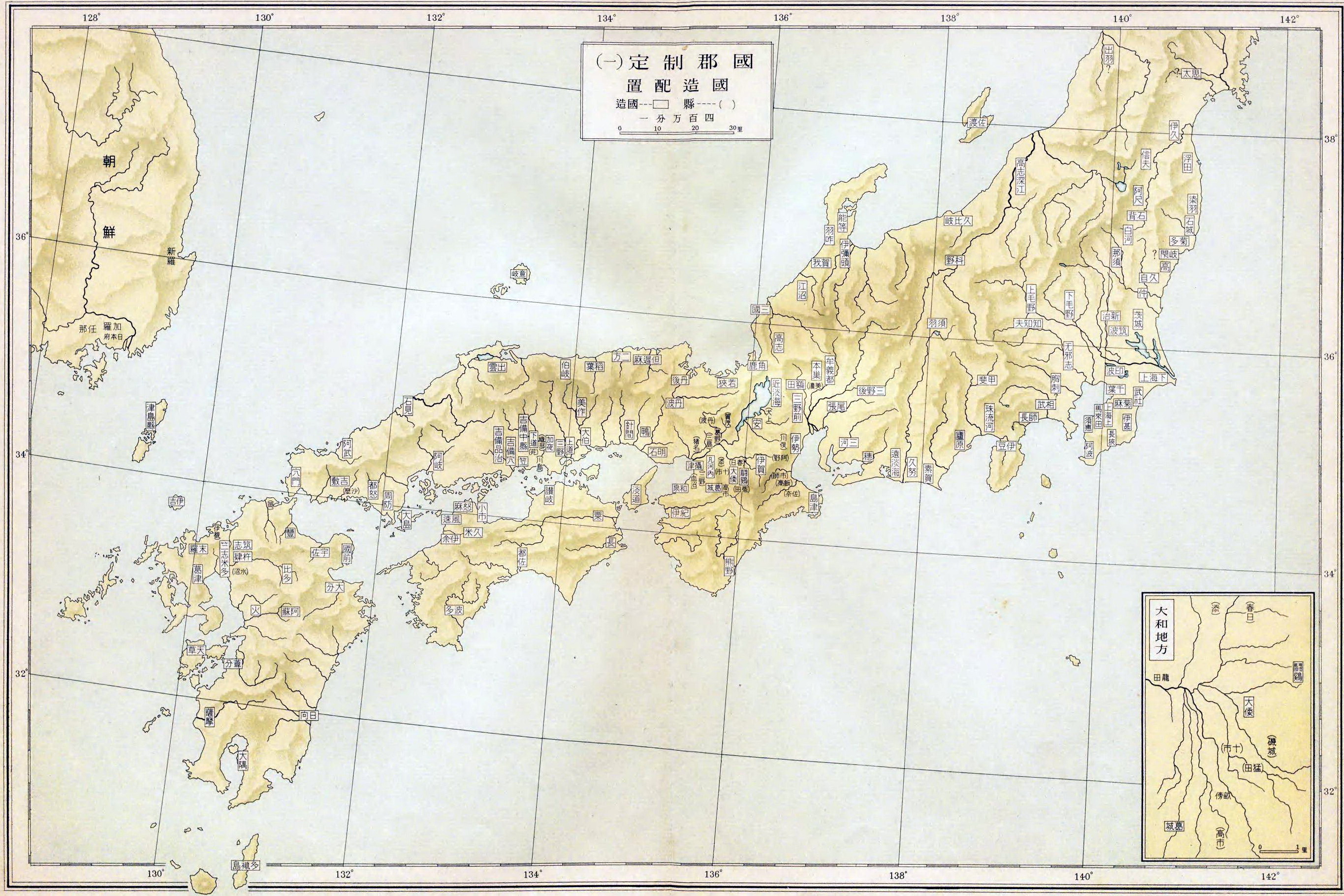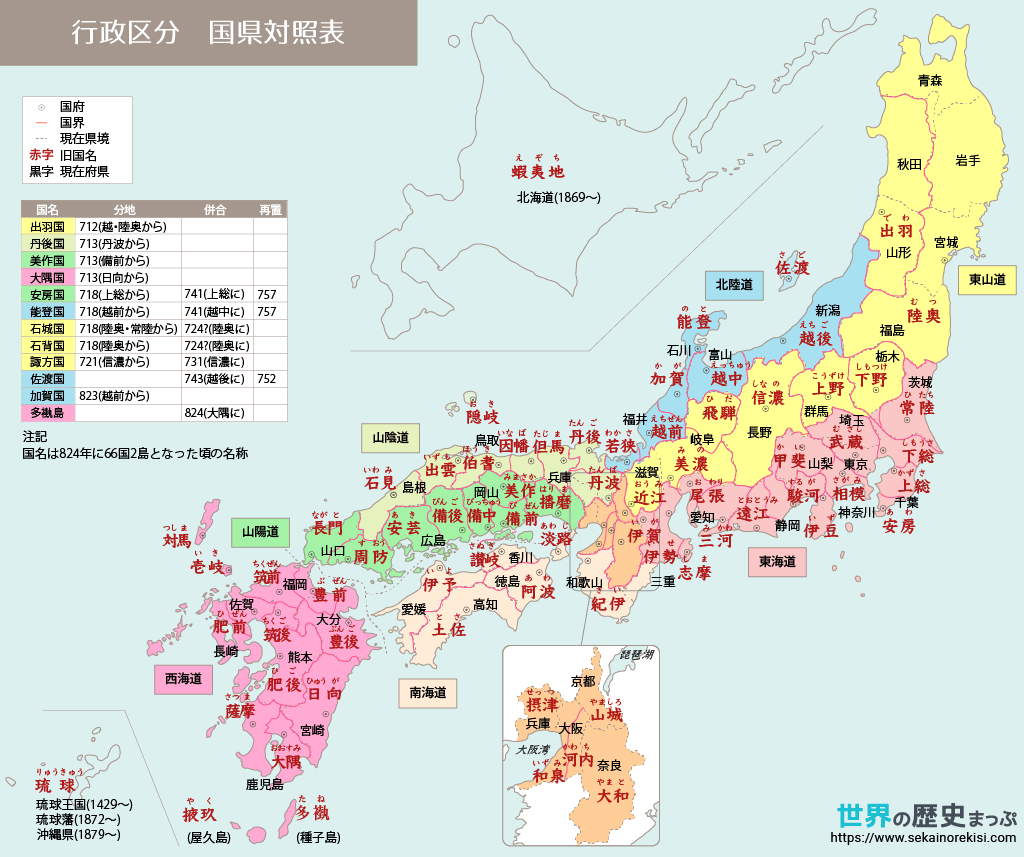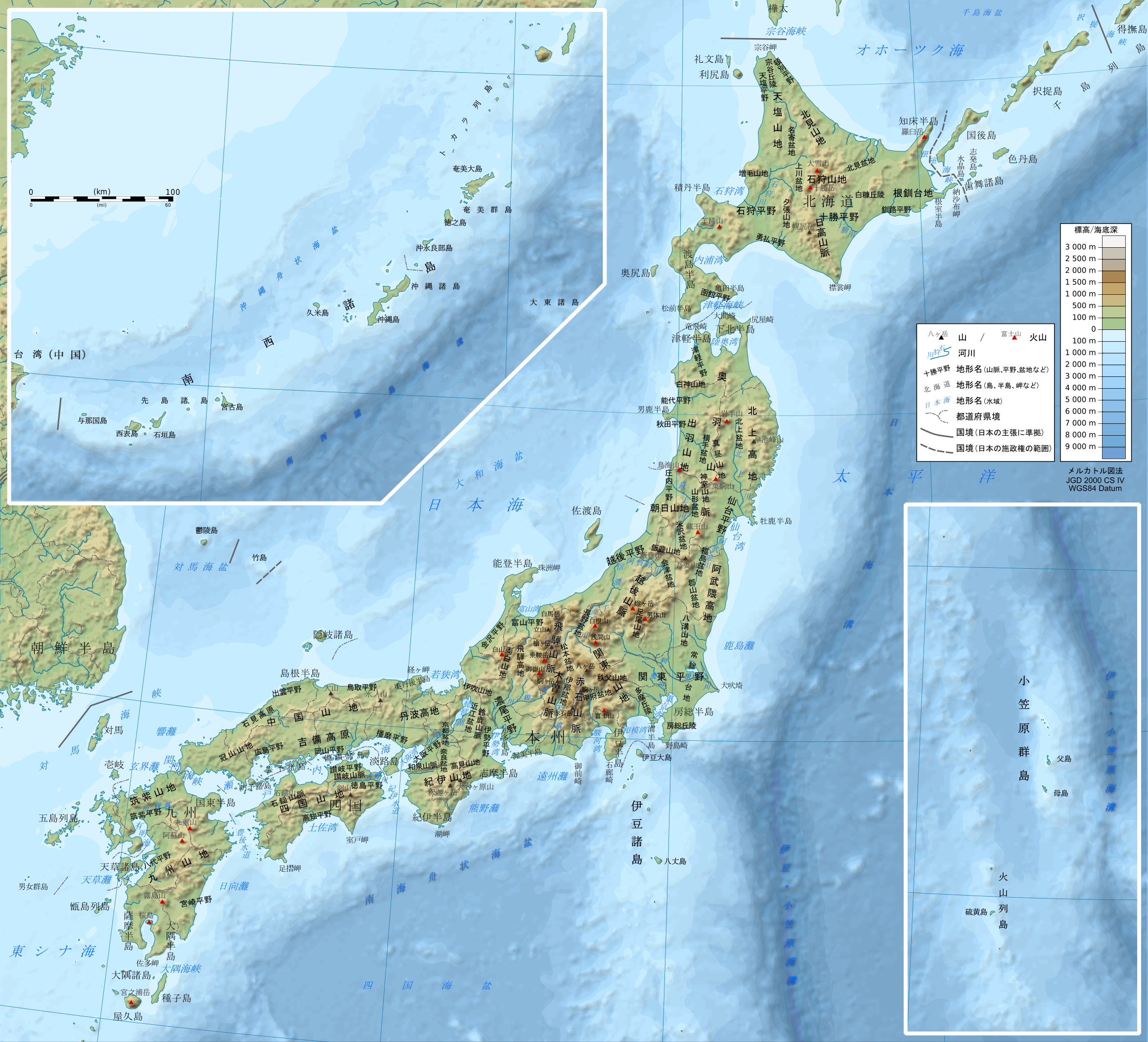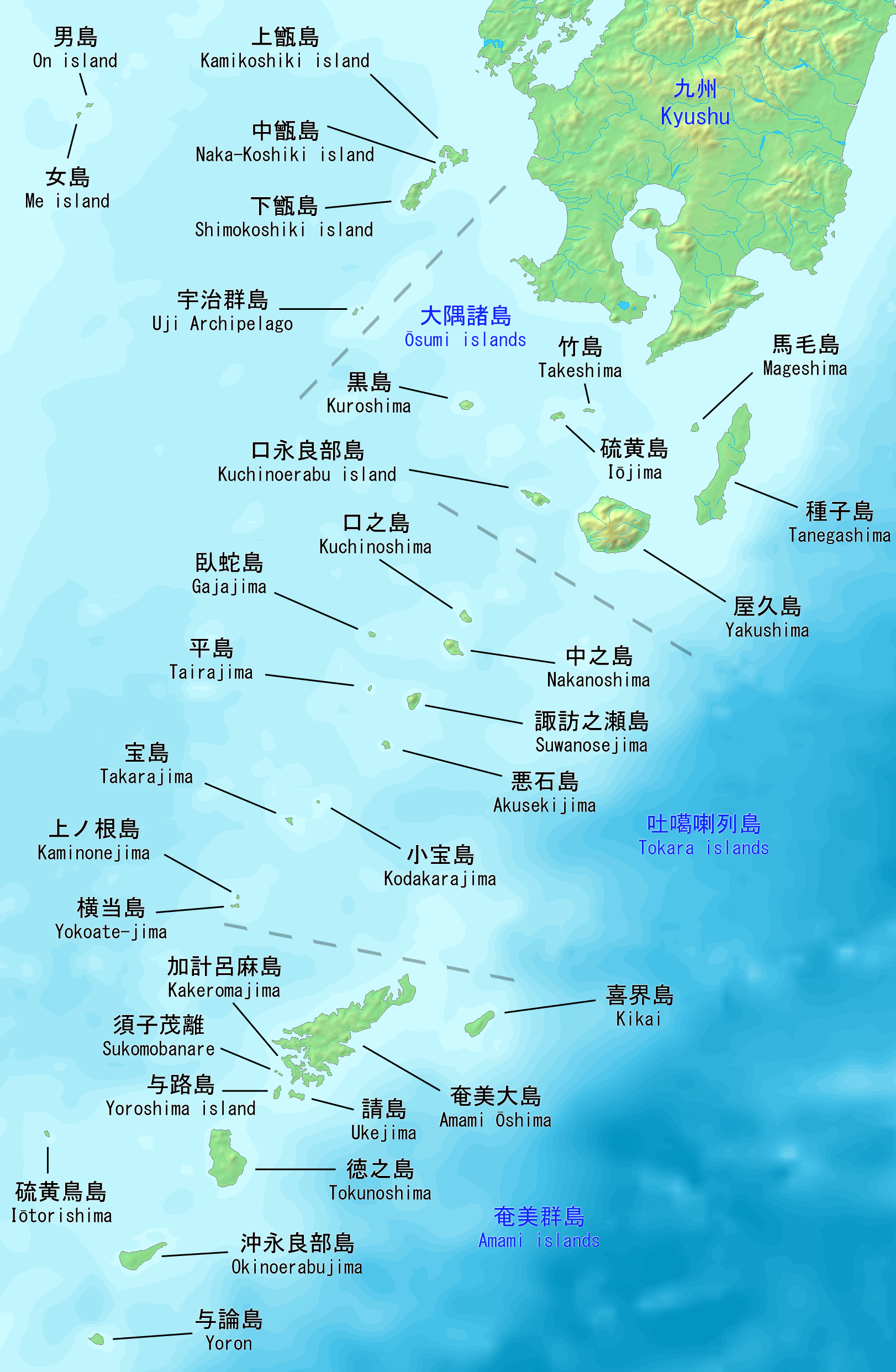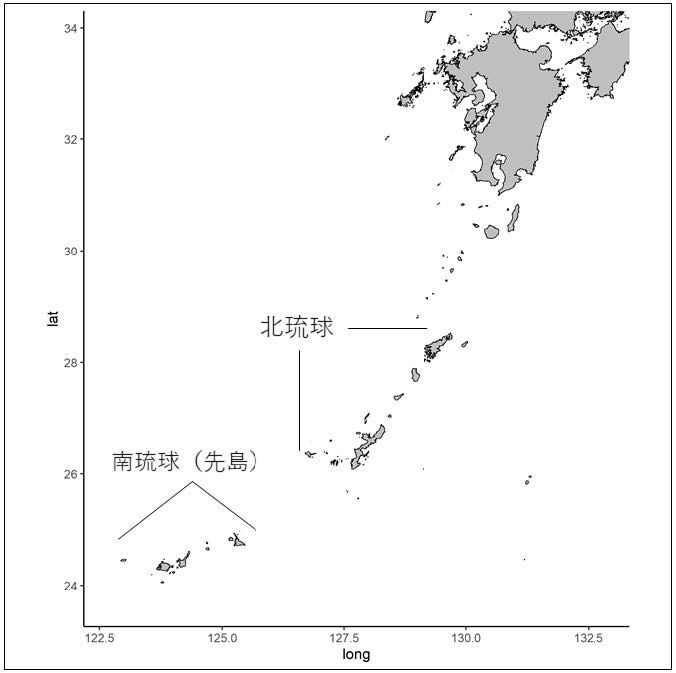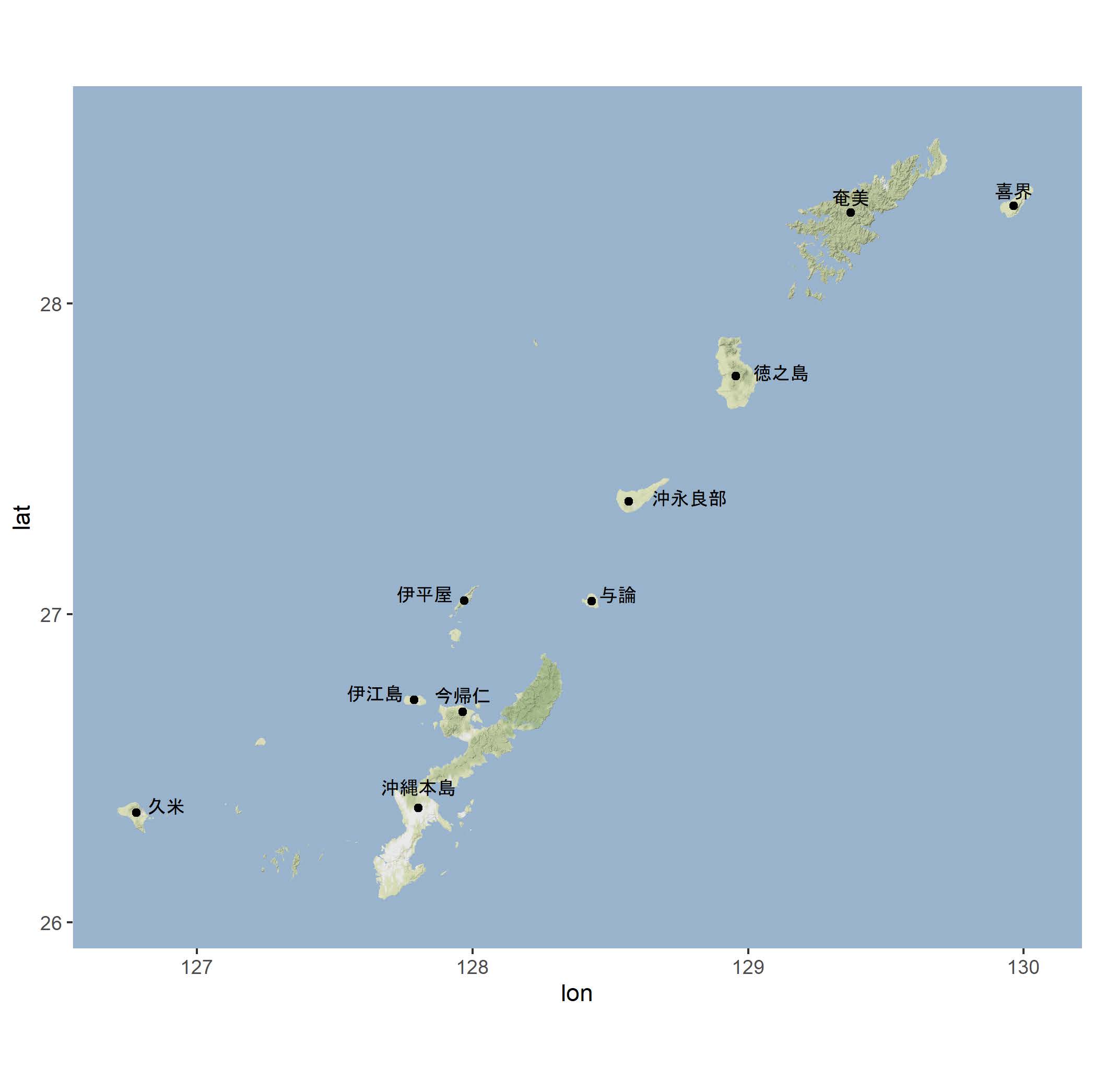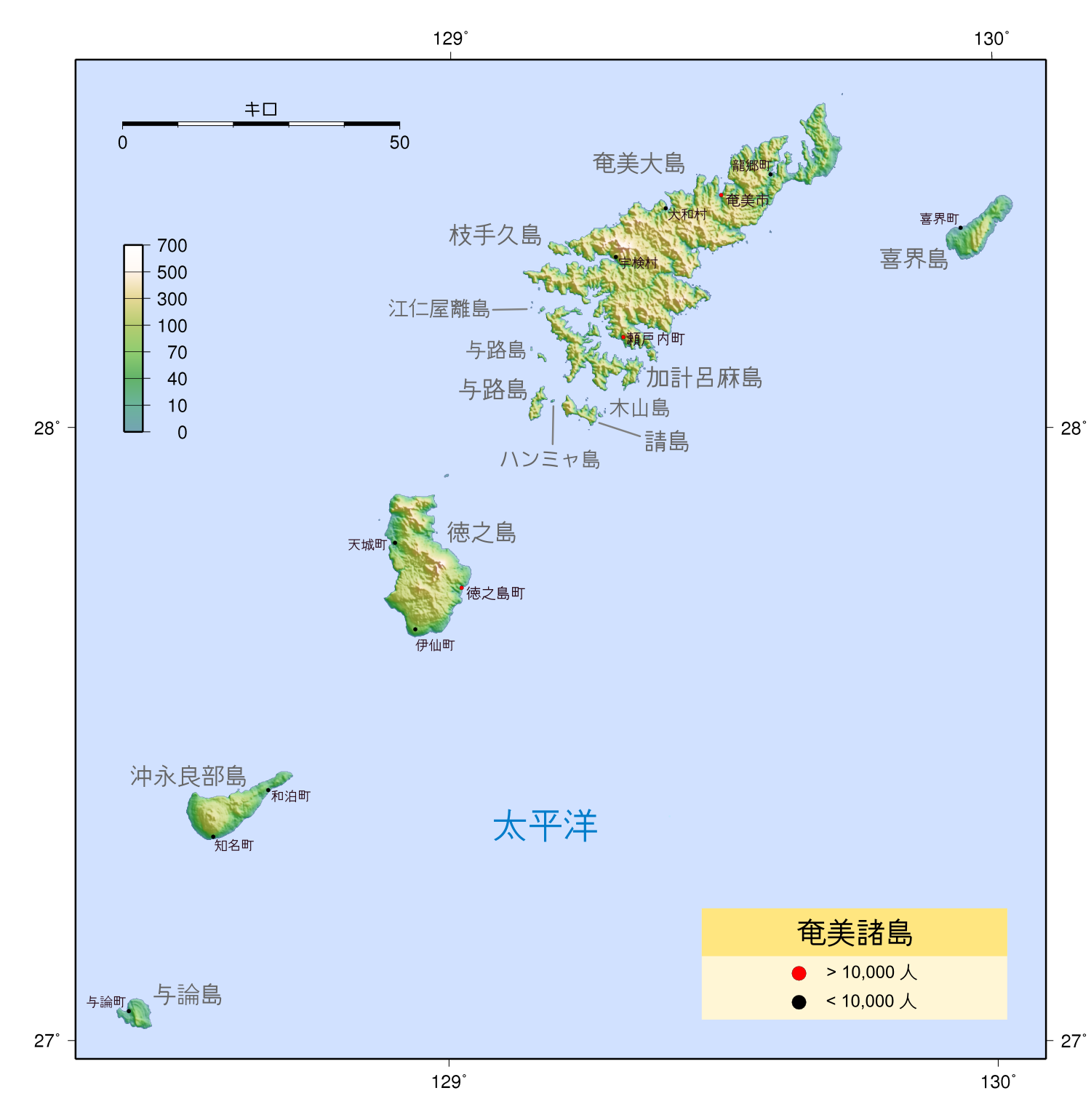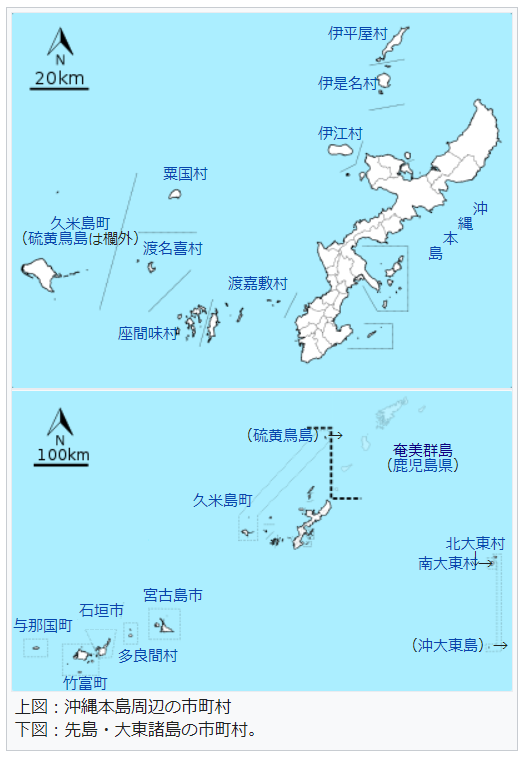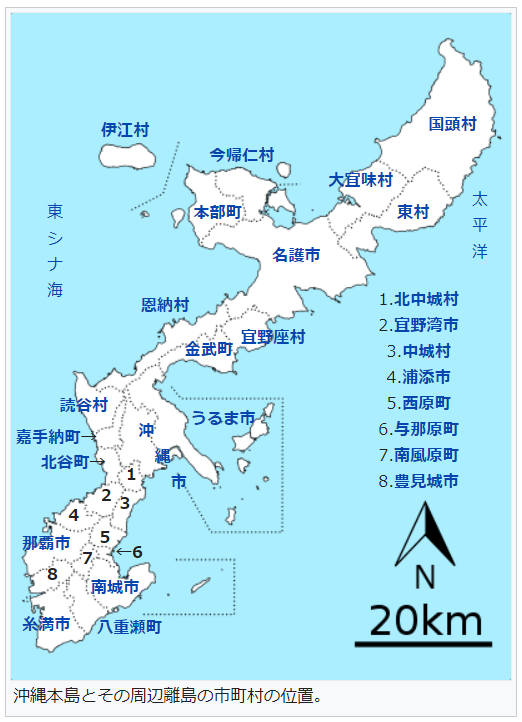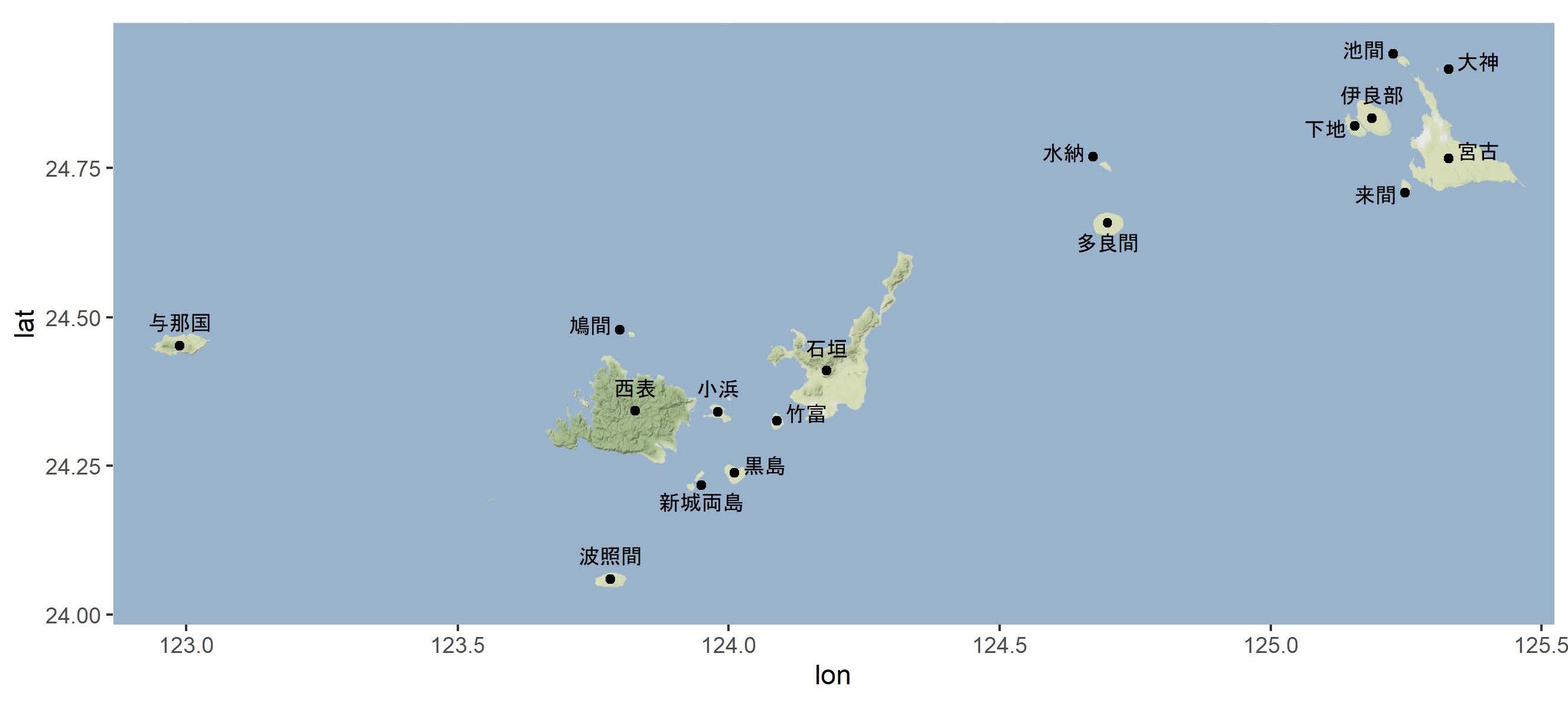罗马字表记
五十音图
表格 | 本体系的标准语罗马字表记
现代方言音韵
表格 | 本体系的方言罗马字表记
附录
行政区划
表格 | 行政区划
地图集
参考
- Batchelor, John. An Ainu-English-Japanese Dictionary (Including a Grammar of the Ainu Language). 2nd ed. Methodist Publishing House, 1905.
- Baxter, William H., and Sagart, Laurent. Old Chinese: A New Reconstruction. Oxford University Press. 2014
- Bentley, John R. A Linguistic History of the Forgotten Islands - A Reconstruction of the Proto-language of the Southern Ryūkyūs -. Global Oriental, 2008.
- Blust, Robert, and Stephen Trussel. The Austronesian Comparative Dictionary. Web ed., Trussel2.com, 21 June. 2020, www.trussel2.com/ACD/
- Celik, Kenan. "(先)日琉祖語の語形成に関する試論." 日琉祖語再建に向けての新たな展望:琉球諸語の視点から, 日本言語学会ワークショップ, 19 June 2022, PDF file.
- Celik, Kenan. "南琉球宮古語史". ResearchGate, Sept. 2020, www.researchgate.net/publication/344495371.
- Celik, Kenan, and 麻生, 玲子. "南琉球八重山語における三型アクセント体系のさらなる報告." 国立国語研究所論集 (NINJAL Research Papers) 27, 2024, pp. 115–135. DOI:10.15084/0002000281.
- Celik, Kenan, et al. "「日本の危機言語語彙データベース」". 令和4年度 第2回「危機言語の保存と日琉諸語のプロソディー」合同研究発表会. 国立国語研究所, 4 Dec. 2022.
此项目包含以下来源:
Celik, Kenan, and 大浦, 辰夫. みんなふつ語彙集. 国立国語研究所. 2022.
Celik, Kenan, et al. "川平方言語彙集". 新版川平村の歴史, 川平村の歴史編纂委員会(編), 2021, pp. 436-410.
Celik, Kenan, et al. "南琉球八重山語波照間方言辞典に関する中間報告." 言語記述論集 15, n.p., 2023, pp. 193-358.
Celik, Kenan. よねおばあ:祖納方言調査. n.p., 2025.
Celik, Kenan. 宮古語砂川方言調査ノート. n.p., 2018.
Celik, Kenan. 与那覇方言調査ノート. n.p., 2025.
Salvatore, Carlino. 沖縄伊平屋田名方言調査ノート. n.p., 2018.
たんにゃむに辞書編集委員会. たんにゃむに辞書・沖永良部島田皆方言辞書. n.p., 2025.
三樹, 陽介. 八丈島方言調査ノート. n.p., 2015.
山田, 真寛, and 中澤, 光平. 八重山語与那国方言調査ノート. 2018.
松倉, 昂平. 福井県池田町方言調査ノート. n.p., 2020.
松倉, 昂平. 福井県大野市上打波方言調査ノート. n.p., 2023.
松倉, 昂平. 石川県白山市河原山語調査ノート. n.p., 2024.
横山, 晶子, et al., editors. 井川方言語彙集 2025年版. 国立国語研究所, 2025.
横山, 晶子. 沖永良部調査ノート. n.p., 2017.
林, 由華, and Celik, Kenan. 宮古語池間西原方言調査ノート. n.p., 2018.
麻生, 玲子, and 尾朝, 祥子. "北琉球沖縄語本部渡久地方言の音調付き語彙資料" 環太平洋地域文化研究 6, n.p., 2025.
木部, 暢子, and 小川, 晋史. 喜界島諸方言調査ノート. n.p., 2013.
木部, 暢子. 与論方言調査ノート. n.p., 2015.
平塚, 雄亮. 鹿児島県甑島里方言調査ノート. n.p., 2019.
小川, 晋史. 喜界島諸方言調査ノート. n.p., 2013.
小西, いずみ, et al. 山梨県奈良田方言調査ノート. n.p., 2022.
与那国方言辞典編集委員会. どぅなんむぬい辞典. 第二版. 与那国町役場, n.d.
知名町公民館講座. しまむにサロン. n.p., 2022. - Celik, Kenan, et al. "琉球祖語の再建に向けた比較データ構築用の枠組提案(UniCog)." 国立国語研究所論集 (NINJAL Research Papers) 26, 2024, pp. 69–97. DOI:10.15084/0002000156.
- Celik, Kenan, et al. 琉球列島における遺伝系統樹と言語系統樹の比較に向けて-言語系統樹の客観的作成手法を検討する-. n.p., n.d.
- Celik, Kenan, et al. 日本の危機言語:日本の消滅危機言語語彙データベース v.2.6 (231019). 国立国語研究所, 2023, https://kikigengo.ninjal.ac.jp/data/tango/search
- Celik, Kenan, et al. UniCogの同源語リストv1 (230731). 2023
- Cooke, Niall P., et al. "Ancient Genomics Reveals Tripartite Origins of Japanese Populations." Nature, vol. 599, 2021, pp. 252-256. DOI:10.1038/s41586-021-04009-8.
- De Boer, Elisabeth M., and Loukareas Petros. "The preservation of proto-Japanese tone class 2.5 in the Izumo region explained." ahiers de Linguistique Asie Orientale East Asian Languages and Linguistics 49, Brill, 2020, pp. 107–135.
- De Boer, Elisabeth M. "The Origin of Alternations in Initial Pitch in the Verbal Paradigms of the Central Japanese (Kyoto Type) Accent Systems." Evidence and Counter-Evidence vol. 2, edited by Festschrift Frederik Kortlandt, Rodopi,
2008, pp. 35-50.
- De Boer, Elisabeth M. The classification of the Japonic languages. n.p., n.d.
- De Boer, Elisabeth M. The Historical Development of Japanese Tone. Part I: From Proto-Japanese to the Modern Dialects. Part II: The Introduction and Adaptation of the Middle Chinese Tones in Japan. Eisenbrauns, 2010.
- De Boer, Elisabeth M. Using Tonal Data to Recover Japanese Language History. Edited by J. Marshall Unger, John Benjamins Publishing Company, 2024. DOI: 10.1075/cilt.365.
- De Boer, Elisabeth M., et al. "Japan Considered from the Hypothesis of Farmer/Language Spread." Evolutionary Human Sciences, vol. 3, 2021, e45. DOI:10.1017/ehs.2021.40.
- Dimhou. Blossom Flowers Tree. Pixabay, 24 Apr. 2019, https://pixabay.com/photos/blossom-flowers-tree-sky-4151081/
- Everhart, Edwin. Phonological Change in Japanese-Ainu Loanwords, Yale University, May 2009
- Frellesvig, Bjarke, and Satoshi Kinsui, editors. Handbook of Historical Japanese Linguistics. De Gruyter Mouton, 2024. Handbooks of Japanese Language and Linguistics, vol. 1.
- Frellesvig, Bjarke, and Whitman, John, editors. Proto-Japanese: Issues and prospects. John Benjamins Publishing Company, 2008
- Frellesvig, Bjarke, and Whitman, John. "The historical source of the bigrade transitivity alternations in Japanese." Transitivity and Valency Alternations Studies on Japanese and Beyond, edited by Taro Kageyama and Wesley M. Jacobsen.
De Gruyter Mouton, 2016, pp. 289-310.
- Frellesvig, Bjarke, and Whitman, John. The Vowels of Proto-Japanese. Japanese Language and Literature 38 (2004) 281–299, 2004.
- Frellesvig, Bjarke. A History of the Japanese Language. Cambridge University Press, 2010.
- Frellesvig, Bjarke. Old Japanese Loanwords. n.p., n.d.
- Frellesvig, Bjarke. On the Reconstruction of Pre-Old Japanese Morphology: OJ Grammatical Morphemes Reflecting Pre-OJ *k- ~ *s-. CSLI Publications, 2021
- Gelabert, Pere, et al. "Diverse Northern Asian and Jomon-Related Genetic Structure Discovered Among Socially Complex Three Kingdoms Period Gaya Region Koreans." Current Biology, vol. 32, no. 18, 2022, pp. 4078-4086.e6. DOI:10.1016/j.cub.2022.07.003.
- Heinrich, Patrick, et al., editors. Handbook of the Ryukyuan Languages: History, Structure, and Use. De Gruyter Mouton, 2015.
- Hisao, Kakehi, et al.. Dictionary of Iconic Expressions in Japanese. Mouton de Gruyter, 1996.
- Irwin, Mark. "連濁抑制と接頭辞." 国立国語研究所論集 (NINJAL Research Papers) 4, 2012, pp. 27–36. DOI:10.15084/00000496.
- Jarosz, Aleksandra, et al. "Demography, Trade and State Power: A Tripartite Model of Medieval Farming/Language Dispersals in the Ryukyu Islands." Journal of Archaeological Science, vol. 48, 2025, pp. 102-120. DOI:10.1016/j.jas.2025.03.007.
- Jarosz, Aleksandra. "Innovations, Distribution Gaps and Mirror Images: The Reflexes of Proto-Ryukyuan Close Vowels in a Post-Nasal Position." Yearbook of the Poznań Linguistic Meeting, vol. 4, 2018, pp. 75–104. DOI:10.2478/yplm-2018-0004.
- Jarosz, Aleksandra. "Non-Core Vocabulary Cognates in Ryukyuan and Kyushu." Proceedings of International Symposium 'Approaches to Endangered Languages in Japan and Northeast Asia (Poster Session)', 2019, pp. 8–29. DOI:10.15026/94151.
- Jarosz, Aleksandra. "Old Japanese Post-Nasal Non-Back Close Vowels in a Comparative Perspective." International Journal of Eurasian Linguistics 3, 2021, pp. 50–82. Brill, 2021.
- Jarosz, Aleksandra. "Reflexes of Proto-Ryukyuan *i and *u in Miyakoan as a chain shift." Lingua Posnaniensis, 2018, pp. 99-121. DOI: 10.2478/linpo-2018-0014.
- JLect - Japonic Languages and Dialects Database Dictionary. JLect, https://www.jlect.com/.
- Kageyama Taro, and Kishimoto, Hideki, editors. Handbook of Japanese Lexicon and Word Formation. De Gruyter Mouton, 2016. Handbooks of Japanese Language and Linguistics, vol. 3.
- Kanenori. Cherry Blossoms Tree Sakura. Pixabay, 4 Nov. 2016, https://pixabay.com/photos/cherry-blossoms-tree-sakura-flowers-1317308/
- Karlgren, Bernhard. 中国音韵学研究[Etudes sur la Phonologie Chinoise]. Translated by 赵元任 et al., 商务印书馆, 1940.
- Kibe, Nobuko, et al., editors. Handbook of Japanese Dialects. De Gruyter Mouton, 2025. Handbooks of Japanese Language and Linguistics, vol. 7.
- Kim, Jonghyun, et al. "Genetic Analysis of a Yayoi Individual from the Doigahama Site Provides Insights into the Origins of Immigrants to the Japanese Archipelago." Scientific Reports, vol. 11, 2021, 12078. DOI:10.1038/s41598-021-90008-w.
- Kiyose, Gisaburo N., and Beckwith, Christopher I. On the Words for Animals in the Japanese Zodiac. n.p., n.d.
- Koganebuchi, Kae, et al. "Demographic History of Ryukyu Islanders at the Southern Part of the Japanese Archipelago Inferred from Whole-Genome Resequencing Data." American Journal of Human Genetics, vol. 110, no. 2, 2022, pp. 297-310.
DOI:10.1016/j.ajhg.2022.01.012.
- Kupchik, John E. A Grammar of the Eastern Old Japanese Dialects. 2011. University of Hawaiʻi, PhD dissertation.
- Kupchik, John E. Azuma Old Japanese: A Comparative Grammar and Reconstruction. De Gruyter Mouton, 2023.
- Kupchik, John. "Ainu Loanwords in Hachijō." Studies in Asian Historical Linguistics, Philology and Beyond, edited by John Kupchik et al., Brill, 2021. Prepublication version.
- Kupchik, John. "Austronesian lights the way: The origins of the words for ‘sun’ and other celestial vocabulary in Old Ryukyuan." The International Journal of Eurasian Linguistics, 3(2), 2021, pp. 237-257. Prepublication version.
- Kupchik, John. "On the Orthography and Phonetics of the Azuma Old Japanese Dialects." Department of Asian Studies Weekly Seminar Series, University of Auckland, 19 Mar. 2013.
- Lawrence, Wayne P. "On the Phylogenetic Position of the Kikaijima Dialects." General Study for Research and Conservation of Endangered Dialects in Japan, edited by Nobuko Kibe, National Institute for Japanese Language and Linguistics
(国立国語研究所), 15 Aug. 2011, pp. 120-126.
- Lawrence, Wayne P. "アクセント変化から見た琉球方言の系統樹と日本祖語音調から見た琉球祖語音調." シンポジウム「日琉諸方言系統論の展望」, 19 Dec. 2020, 国立国語研究所. 会議発表.
- Lawrence, Wayne P. "まみ(貒・貛)考." 国立国語研究所論集 (NINJAL Research Papers) 29, 2025, pp. 127–133. DOI:10.15084/0002000514.
- Lawrence, Wayne P. "琉球方言 「焼べる」考." 琉球の方言 vol. 39, 法政大学沖縄文化研究所, 31 Mar. 2015, pp. 1-9. DOI: 10.15002/00012461.
- Lawrence, Wayne P. "与那国方言の系統的位置." 琉球の方言 vol. 32, 法政大学沖縄文化研究所, 31 Mar. 2008, pp. 59-67. DOI: 10.15002/00012533.
- Lawrence, Wayne P. "竹富島方言の a/ǝ について." 琉球の方言 vol. 23, 法政大学沖縄文化研究所, 31 Mar. 1999, pp. 165-179. DOI: 10.15002/00012576.
- Lawrence, Wayne P. 八重山语の区画について. n.p., n.d.
- Lawrence, Wayne P. 沖縄方言群の下位区分について. n.p., n.d.
- Lawrence, Wayne P. 琉球祖語 *kaja 考, 法政大学沖縄文化研究所, n.d.
- Lawrence, Wayne P. 竹富島方言アクセントと「系列別語彙」 ―附 竹富島方言版「北風と太陽」―, 法政大学沖縄文化研究所, n.d.
- Lee, Ki-Moon, and Ramsey, S. Robert. A History of the Korean Language. Cambridge University Press, 2011.
- Man’yōshū: Book 1. Translated by Alexander Vovin, A New English Translation Containing the Original Text, Kana Transliteration, Romanization, Glossing and Commentary, Brill, 2017.
- Man’yōshū: Book 14. Translated by Alexander Vovin, A New English Translation Containing the Original Text, Kana Transliteration, Romanization, Glossing and Commentary, Brill, 2012.
- Man’yōshū: Book 15. Translated by Alexander Vovin, A New English Translation Containing the Original Text, Kana Transliteration, Romanization, Glossing and Commentary, Brill, 2009.
- Man’yōshū: Book 17. Translated by Alexander Vovin, A New English Translation Containing the Original Text, Kana Transliteration, Romanization, Glossing and Commentary, Brill, 2016.
- Man’yōshū: Book 18. Translated by Alexander Vovin, A New English Translation Containing the Original Text, Kana Transliteration, Romanization, Glossing and Commentary, Brill, 2016.
- Man’yōshū: Book 18. Translated by Alexander Vovin, A New English Translation Containing the Original Text, Kana Transliteration, Romanization, Glossing and Commentary, Brill, 2018.
- Man’yōshū: Book 2. Translated by Alexander Vovin, A New English Translation Containing the Original Text, Kana Transliteration, Romanization, Glossing and Commentary, Brill, 2020.
- Man’yōshū: Book 20. Translated by Alexander Vovin, A New English Translation Containing the Original Text, Kana Transliteration, Romanization, Glossing and Commentary, Brill, 2014.
- Man’yōshū: Book 5. Translated by Alexander Vovin, A New English Translation Containing the Original Text, Kana Transliteration, Romanization, Glossing and Commentary, Brill, 2011.
- Martin, Samuel E. The Japanese Language Through Time. Yale University Press, 1987.
- Matsumoto, Yo. "List of Core Causativity Pairs in Japanese (A Revision of Jacobsen (1992))." Transitivity and Valency Alternations: Studies on Japanese and Beyond, edited by Taro Kageyama and Wesley M. Jacobsen, De Gruyter Mouton,
2016, pp. 479-488.
- Pappalardo, Giuseppe. 琉球方言新資料を用いた上代特殊仮名遣いの検討. n.p., n.d.
- Pellard, Thomas, et al. "A New Local Indicator of Spatial Autocorrelation Identifies Clusters of High Rendaku Frequency in Japanese Place Names." Journal of Linguistic Geography, vol. 11, no. 1, 2023, pp. 1-7, DOI:10.1017/jlg.2022.11.
- Pellard, Thomas. "A (More) Comparative Approach to Some Japanese Etymologies." Studies in Japanese and Korean Historical and Theoretical Linguistics and Beyond, edited by William McClure and Alexander Vovin, Brill, 2017, pp. 55-64.
DOI:10.1163/9789004351134_007.
- Pellard, Thomas. "Proto-Japonic *e and *o in Eastern Old Japanese." Cahiers de Linguistique – Asie Orientale, vol. 37, no. 2, CRLAO (Centre de Recherches Linguistiques sur l'Asie Orientale), 2008, pp. 133-158. DOI:10.1163/1960602808X00055.
- Pellard, Thomas. "Ryukyuan and the Reconstruction of Proto-Japanese-Ryukyuan." Handbook of Japanese Historical Linguistics, edited by Bjarke Frellesvig, Satoshi Kinsui, and John Whitman, De Gruyter Mouton, 2018.
- Pellard, Thomas. "Ryukyuan Perspectives on the Proto-Japonic Vowel System." Japanese/Korean Linguistics 20, edited by Bjarke Frellesvig and Peter Sells, CSLI Publications, 2013, pp. 81-96.
- Pellard, Thomas. "The historical position of the Ryukyuan Languages." Historical linguistics in the Asia-Pacific region and the position of Japanese, National Museum of Ethnology, Jul 2011, pp. 55–64.
- Pellard, Thomas. "The Linguistic Archeology of the Ryukyu Islands." Handbook of the Ryukyuan Languages: History, Structure, and Use, edited by Patrick Heinrich, Shinsho Miyara, and Michinori Shimoji, De Gruyter Mouton, 2015, pp.
13-37. De Gruyter Online, DOI:10.1515/9781614511151.13.
- Pellard, Thomas. "Typological and Historical-Comparative Perspectives on Tone and Vowel Length in Ryukyuan." Japanese and Korean Accent: Diachrony, Reconstruction, and Typology, International Conference, ILCAA, Tokyo University
of Foreign Studies, July 2016.
- Pellard, Thomas. "琉球諸語の母音体系の形成過程." シンポジウム「日琉諸方言系統論の展望」, 19 Dec. 2020, 国立国語研究所. 会議発表.
- Pellard, Thomas. "日本列島の言語の多様性 —— 琉球諸語を中心に ——." 琉球列島の言語と文化 —— その記録と継承 ——, edited by 田窪 行則, くろしお出版, 2013, pp. 81–92
- Pellard, Thomas. "日琉諸語の系統分類と分岐について." シンポジウム「フィールドと文献から見る日琉諸語の系統と歴史」, 22–23 Dec. 2018, 国立国語研究所. 会議発表.
- Pellard, Thomas. "日琉祖語の分岐年代." 琉球諸語と古代日本語:日琉祖語の再建に向けて, edited by 田窪 行則, Whitman John, and 平子 達也, くろしお出版, 2016, pp. 99–124
- Pellard, Thomas. Why It Is Important to Study the Ryukyuan Languages — The Example of Ōgami Ryukyuan. Oxford University, 19 Jan. 2009. PowerPoint presentation.
- Pellard, Thomas. 琉球諸語の古さと新しさ —— 母音と子音について ——. n.p., n.d.
- poem. 《广韵字音表(20170209,poem版)》. Microsoft Excel file, 18 July 2024. 知乎, zhuanlan.zhihu.com/p/20430939.
- prometeus_86. Sakura Pink Bokeh. Pixabay, 8 Sept. 2017, https://pixabay.com/photos/sakura-pink-bokeh-blossom-spring-2729006/
- Pulleyblank, Edwin G. 上古汉语的辅音系统[The Consonantal System of Old Chinese]. Translated by 潘悟云 and 徐文堪, 中华书局, 1999.
- Robbeets, Martine, and Alexander Savelyev, editors. The Oxford Guide to the Transeurasian Languages. Oxford University Press, 2020.
- Robbeets, Martine, editor. Shared Grammaticalization: With Special Focus on the Transeurasian Languages. John Benjamins, 2020.
- Robbeets, Martine, et al. "Triangulation Reduces the Polygon of Error for the History of Transeurasian." Nature Human Behaviour, vol. 5, 2021, pp. 695–706. DOI:10.1038/s41562-021-01208-3.
- Robbeets, Martine, et al. "Triangulation Supports Agricultural Spread of the Transeurasian Languages." Science, vol. 373, no. 6557, 2021, pp. 842–848.
- Robbeets, Martine. "Austronesian influence and Transeurasian ancestry in Japanese." Language Dynamics and Change 7, Brill, 2017, pp. 210–251
- Robbeets, Martine. "Is Japanese Related to Korean, Tungusic, Mongolic and Turkic?" Journal of Language Relationship, vol. 12, no. 1, 2017, pp. 1–24.
- Robbeets, Martine. "Paradigm Change in the Transeurasian Languages and Beyond." Paradigm Change in Historical Linguistics, edited by Adam Hyllested et al., John Benjamins, 2022, pp. 215–240.
- Robbeets, Martine. Diachrony of Verb Morphology: Japanese and the Transeurasian Languages. De Gruyter Mouton, 2015.
- Russell, Kerri L. A Reconstruction and Morphophonemic Analysis of Proto-Japonic Verbal Morphology. PhD dissertation, University of Hawai‘i, 2006.
- Salvatore, Carlino, and 下地, 理則.「日琉諸語オンライン辞書」(2025年3月更新版). 2025, https://odjl.net
此项目包含以下来源:
Marco, Scotto di Clemente. 鹿児島県南九州市頴娃町方言の語彙データ (2025). CARLINO Salvatore (2022-2025) 「日琉諸語オンライン辞書」. 2025.
Salvatore, Carlino. 伊平屋方言の語彙データ (2022). CARLINO Salvatore (2022-2025) 「日琉諸語オンライン辞書」. 2022.
濱田, 七海. 鹿児島県喜界島中里方言の語彙データ (2024). CARLINO Salvatore (2022-2025) 「日琉諸語オンライン辞書」. 2024.
高城, 隆一. 鹿児島県内之浦方言の語彙データ (2023). CARLINO Salvatore (2022-2025) 「日琉諸語オンライン辞書」. 2023.
宮岡, 大. 愛媛県大洲方言の語彙データ (2022). CARLINO Salvatore (2022-2025) 「日琉諸語オンライン辞書」. 2022.
廣澤, 尚之. 宮崎県椎葉村尾前方言の語彙データ (2025). CARLINO Salvatore (2022-2025) 「日琉諸語オンライン辞書」. 2025.
横山, 晶子. 沖永良部島国頭方言の語彙データ (2024). CARLINO Salvatore (2022-2025) 「日琉諸語オンライン辞書」. 2024.
崎原, 正志. 沖縄県本部町字具志堅方言の語彙データ (2023). CARLINO Salvatore (2022-2025) 「日琉諸語オンライン辞書」. 2023.
松岡, 葵. 福岡県柳川市方言の語彙データ (2022). CARLINO Salvatore (2022-2025) 「日琉諸語オンライン辞書」. 2022.
藤田, ラウンド, 幸世. 宮古島久松方言の語彙データ (2023). CARLINO Salvatore (2022-2025) 「日琉諸語オンライン辞書」. 2023.
玉元, 孝治. 沖縄県金武町金武方言の語彙データ (2024). CARLINO Salvatore (2022-2025) 「日琉諸語オンライン辞書」. 2024.
占部, 由子. 南琉球八重山西表船浮方言の語彙データ (2022). CARLINO Salvatore (2022-2025) 「日琉諸語オンライン辞書」. 2022. - Shibatani, Masayoshi, and Kageyama Taro, editors. Handbook of Japanese Phonetics and Phonology. De Gruyter Mouton, 2015. Handbooks of Japanese Language and Linguistics, vol. 2.
- Starostin, Sergei A. 古汉语音系的构拟[The Reconstruction of Old Chinese Phonology]. 北京大学出版社, 2012.
- Starostin, Sergei A., et al. An Etymological Dictionary of Altaic Languages. 3 vols., Brill, 2003.
- Takahashi, Takuya, et al. "Bayesian phylogenetic analysis of pitch-accent systems based on accentual class merger: a new method applied to Japanese dialects." Journal of Language Evolution, 8(2), 2024, 169-191. DOI: 10.1093/jole/lzae004.
- Thorpe, Maner Lawton. Ryukyuan Language History. Dissertation, University of Southern California, May 1983.
- Tyler Lau. "Reevaluating the Diphthong Mergers in Japono-Ryukyuan." Proceedings of the Forty-First Annual Meeting of the Berkeley Linguistics Society, edited by Anna E. Jurgensen, Hannah Sande, Spencer Lamoureux, Kenny Baclawski,
and Alison Zerbe, Berkeley Linguistics Society, 7-8 Feb. 2015. pp. 287-306
- Vovin, Alexander. "Ainu Elements in Early Japonic." Handbook of the Ainu Language, edited by Anna Bugaeva, De Gruyter Mouton, 2022, pp. 185-208.
- Vovin, Alexander. "Austronesians in the Northern Waters?" International Journal of Eurasian Linguistics 3, Brill, 2021, pp. 272–300
- Vovin, Alexander. "Cin-Han and Silla Words in Chinese Transcription." Promenades in Language: Essays on the Occasion of Professor Chin-Woo Kim's Retirement, edited by Sang-Oak Lee, Choong-Yon Park, and James H. Yoon, n.p., n.d.,
pp. 603-629.
- Vovin, Alexander. "From Koguryǒ to T’amna." Korean Linguistics, vol. 15, no. 2, 2013, pp. 222-240. John Benjamins Publishing Company, DOI:10.1075/kl.15.2.03vov.
- Vovin, Alexander. "Old Korean and Proto-Korean *r and *l Revisited." International Journal of Eurasian Linguistics 2, Brill, 2020, pp. 94–107
- Vovin, Alexander. "Origins of the Japanese Language." Oxford Research Encyclopedia of Linguistics, Oxford University Press, Sept. 2017, DOI:10.1093/acrefore/9780199384655.013.277.
- Vovin, Alexander. "Out of Southern China? - Some linguistic and philological musings on the possible Urheimat of the Japonic language family -." XXVIIes Journées de Linguistique d'Asie Orientale, 26-27 June. 2014. PowerPoint presentation.
- Vovin, Alexander. "Why Japonic Is Not Demonstrably Related To ‘Altaic’ Or Korean." Historical Linguistics in the Asia-Pacific region and the position of Japanese, ICHL XX, Osaka, 30 July. 2011. PowerPoint presentation.
- Vovin, Alexander. "琉球語、上代日本語と周辺の諸言語 ―再構と接点の諸問題―." 日本研究 第39集, 2009, pp. 11-27. 抜刷.
- Vovin, Alexander. "琉球祖語の語中における有声子音の再建について." 国立国語研究所, 7 Oct. 2012. PowerPoint presentation.
- Vovin, Alexander. "日本語の起源と消滅危機言語." 人間文化研究所功労賞記念講演, 9 Dec. 2015. PowerPoint presentation.
- Vovin, Alexander. "上代日本列島の民族言語史." 国立国語研究所, 8 Dec. 2015. PowerPoint presentation.
- Vovin, Alexander. "上代日本語と古代·中世韓国語の「水」と「淚」." 日韓言語学者会議: 韓国語を通じた日韓両国の相互理解と共生, 12-13 Nov. 2010, 麗澤大学廣池千九郎記念講堂, 麗澤大学言語研究センター, pp. 115-120.
- Vovin, Alexander. "神聖の剣と魔法の領巾 ―言語学と歴史学の接点―." 古代東アジア交流の総合的研究<国際日本文化研究センター共同研究報告>, edited by 王 維坤 and 宇野 隆夫, 国際日本文化研究センター, 2008, pp. 455-468.
- Vovin, Alexander. A Descriptive and Comparative Grammar of Western Old Japanese. Revised, updated and enlarged 2nd ed. Brill, 2020.
- Vovin, Alexander. Japanese, Korean, and Other 'Non-Altaic' Languages. Harrassowitz Verlag, 2009.
- Vovin, Alexander. Koreo-Japonica (A Re-evaluation of a Common Genetic Origin). University of Hawai‘i Press, 2010
- Vovin, Alexander. Long Vowels in Proto-Japanese. University of Michigan, 1992
- Vovin, Alexander. Names of Large Exotic Animals and the Urheimat of Japonic. Koninklijke Brill N.V., 2021.
- Vovin, Alexander. On one more source of Old Japanese i2. Springer Science+Business Media B.V., 2011.
- Vovin, Alexander. The Eastern Old Japanese Corpus and Dictionary, Brill, 2022.
- Vovin, Alexander. The Footprints of the Buddha. The Text and the Language, Brill, 2021.
- Vovin, Alexander. The Language of the Old-Okinawan Omoro Sōshi. Brill, 2021.
- Vovin, Alexander. 琉球祖語の語中における有声子音の再建について. n.p., n.d.
- Vovin, Alexander. 縄文時代から上代までの日本列島:言語は何語?. n.p., n.d.
- Vovin, Alexander. 萬葉集と風土記に見られる不思議な言葉と上代日本列島に於けるアイヌ語の分布, n.d., 国際日本文化研究センター. 会議発表.
- Whitman, John, and Yanagida, Yuko. "A Korean Grammatical Borrowing in Early Middle Japanese Kunten Texts and its Relation to the Syntactic Alignment of Earlier Korean and Japanese." Japanese/Korean Linguistics 21, edited by Nam
Seungho, Ko Heejeong and Jun Jongho. CSLI Publications, 2012
- Whitman, John. "The Relationship Between Japanese and Korean." The Languages of Japan and Korea, edited by Nicolas Tranter, Routledge, 2012, pp. 24-38.
- Whitman, John. A rule of medial *-r- loss in pre-Old Japanese. n.p., n.d.
- Whitman, John. 日琉祖語の音韻体系と連体形・已然形の起源. n.p., n.d.
- Wikipedia, the free encyclopedia Wikipedia, https://www.wikipedia.org/
- Ying, JJ. Mt. Fuji, Japan. Unsplash, 30 Mar. 2017, https://unsplash.com/photos/mt-fuji-japan-9Qwbfa_RM94
- 八丈町教育委員会. 島ことばを話そう伝えよう!. 八丈町教育委員会, 1 Nov, 2013.
- 白鳥, 詩織. "口頭発表資料 周防大島祖語における有坂の第三則の例外 付正誤表." 日本歴史言語学会 2024 年大会, 8 Dec. 2025. 口頭発表.
- 白鳥, 詩織. "有坂・池上法則の新解釈." 『歴史言語学』 13, 日本歴史言語学会, 2024, pp. 31-54.
- 出村, 政彬. 特集ヤポネシア 47都道府県人のゲノムが明かす日本人の起源. 岩波書店, 2023.
- 川野, 絵梨. 中世文書の日本語史的研究: 東囯文書を中心に [The Study of Japanese Language in Historical Documents of Eastern Japan in the Middle Ages]. PhD dissertation, 東京女子大学大学院人間科学研究科, 2018.
- 大琉球語辞典. 琉球大学, 2025, https://ryukyu-lang.lab.u-ryukyu.ac.jp/
- 大滝, 靖司. "日本語借用語における2種類の促音化." 国立国語研究所論集 (NINJAL Research Papers) 6, 2013, pp. 111–133. DOI:10.15084/00000514.
- 島袋, 盛世. The Accentual History of the Japanese and Ryukyuan Languages - A Reconstruction -. Global Oriental Ltd. 2007
- 徳川, 宗賢. "Towards a Family Tree for Accent in Japanese Dialects." Translated by James D. McCawley, Papers in Japanese Linguistics, vol. 1, no. 2, Dec. 1972, pp. 301-320.
- 丁, 鋒. 日漢琉漢對音與明清官話音研究. 中華書局, 2008
- 飯豊, 毅一, et al, editors. 講座方言学 第 4 巻 ~ 第 9 巻. 国書刊行会, 1982–1984.
- 風間, 伸次郎. 八丈型基層言語と日本語の重層性. n.p., n.d.
- 服部, 四郎. Japanese Dialects. n.p., 1973.
- 富島, 壯英. "「ドゥナン」(与那国)語源考." 沖縄県立博物館総合調查報告書Ⅳ 一与那国島一, 1989, pp. 15-24.
- 岡本, 雅享. "越佐と出雲1 出雲崎と佐渡国伝説." 新潟日報, 12 Feb. 2016.
- 岡本, 雅享. "越佐と出雲2 出雲崎から出雲田へ." 新潟日報, 26 Feb. 2016.
- 岡本, 雅享. "越佐と出雲3 海を渡り来る出雲の神/蘇った寄木神社." 新潟日報, 11 Mar. 2016.
- 岡本, 雅享. "越佐と出雲4 出雲の熊野大神を祭る社/古代潟潟湖のほとりに鎮座." 新潟日報, 25 Mar. 2016.
- 岡本, 雅享. "越佐と出雲5 ヌヌナカワヒメとミホススミ/西頚頚城に色濃く残る出雲神の伝説." 新潟日報, 8 Apr. 2016.
- 岡本, 雅享. "越佐と出雲6 金山開発後の移民 旅館や廻廻船業興し発展." 新潟日報, 22 Apr. 2016.
- 岡本, 雅享. "越佐と出雲7 出雲文化の分岐点―越佐から内陸へ/信越国境を挟む二つの小出雲." 新潟日報, 13 May. 2016.
- 高木, 雅弘. 「『三国史記』「地理志」の高句麗地名漢字:おもに日本語との比較による考証」. 東洋文庫書報, no. 47, 東洋文庫, Mar. 2016.
- 宫本, 一夫. "The Emergence of ‘Transeurasian’ Language Families in Northeast Asia as Viewed from Archaeological Evidence." Journal of World Prehistory, vol. 35, no. 3, 2022, pp. 321-355. DOI:10.1007/s10963-022-09167-x.
- 宮野, 聡. A Chronological Sketch of the Amuro-Koreanic Parallelism. Ver.2.0. n.p., n.d. PDF file.
- 宮野, 聡. ニヴフ語と朝鮮語の音韻史の対照的・通時的研究 (ver. 2020.1.7). n.p., n.d. PDF file.
- 宮野, 聡. 日本・朝鮮におけるニヴフ語要素 —アムール語族を軸とした北東アジア言語史考察― (ver.2019.8.17). n.p., n.d. PDF file.
- 宮野, 聡. 上代日本語「堅香子/カタカゴ1」の語源. n.p., n.d. PDF file.
- 宮野, 聡. 早良(さわら)という地名について雑考. n.p., n.d. PDF file.
- 加治工, 真市. "南琉球语群概説." 琉球の方言 vol. 40, 法政大学沖縄文化研究所, 31 Mar. 2016, pp. 107-200. (http://hdl.handle.net/10114/13026).
- 孔, 庆鹏, et al. "Mitogenome Evidence Shows Two Radiation Events and Dispersals of Matrilineal Ancestry from Northern Coastal China to the Americas and Japan." Molecular Biology and Evolution, vol. 39, no. 7, 2022, msac140. DOI:10.1093/molbev/msac140.
- 李, 香. 日译吴音的读音层次与六朝南音. 世界图书出版广东有限公司, 2014.
- 林, 智凱. "琉球語音演變:以韓語文獻為主." 《臺大東亞文化研究》第四期, Apr. 2017, pp. 43-67. DOI: 10.6579/NJEAC.2017.4.5.
- 林, 智凱. A Reconstruction of Old Okinawan A Corpus-based Approach. Dissertation, University Of Hawai‘i, Aug. 2015.
- 木部, 暢子. "言語地図の一解釈: 「捨てる」の九州方言". 文獻探究, vol. 8, 1981, pp. 15-25. DOI: 10.15017/10519.
- 木部, 暢子. "奄美の方言." 奄美ニューズレター vol. 11, 法政大学沖縄文化研究所, Oct. 2004, pp. 8-19. (http://hdl.handle.net/10232/17672).
- 那須, 昭夫. "オノマトペの語形成とレベル順序づけ." 日本語と日本文学, vol. 58, 2015, pp. 41-62, http://hdl.handle.net/2241/00125850.
- 平子, 達也. "ラムゼイ説と日本語アクセント史研究の諸問題" 音声研究, 第16巻第1号, 2012, pp. 16-29
- 平子, 達也, "出雲仁多方言における母音をめぐる音変化." 言語研究 165, 2024, pp. 1–32. DOI:10.11435/gengo.165.0_1.
- 平子, 達也. "外輪式アクセントの歴史的位置づけについて." アジア・アフリカ言語文化研究 94, 2017, pp. 259-276.
- 平子, 達也, and Thomas Pellard. "八丈語の古さと新しさ." 「消滅危機方言の調査・保存のための総合的研究」八丈方言調査報告書. 国立国語研究所, Oct. 2013. pp 47-67
- 平子, 達也, et al. 日本語・琉球諸語による歴史比較言語学. 岩波書店, 2024.
- 平子, 達也. 出雲仁多方言の母音をめぐる音変化について. n.p., n.d.
- 浅井, 淳. "連濁生起の傾向と定着化." 国立国語研究所論集 (NINJAL Research Papers) 7, 2014, pp. 27–44. DOI:10.15084/00000523.
- 日本国語大辞典. 第2版, 小学館, 2000-2002.
- 日野, 資成. "上代の接頭語「い」「さ」の機能について." 國語學, vol. 52, no. 3, 2001, pp. 92-93. CiNii Articles.
- 上野, 善道. "琉球与那国方言体言のアクセント資料(1)." 琉球の方言 vol. 34, 法政大学沖縄文化研究所, 31 Mar. 2010, pp. 1-30. DOI: 10.15002/00012516.
- 上野, 善道. "琉球与那国方言体言のアクセント資料(2)." 琉球の方言 vol. 37, 法政大学沖縄文化研究所, 31 Mar. 2013, pp. 109-142. DOI: 10.15002/00012505.
- 上野, 善道. "琉球与那国方言体言のアクセント資料(3)." 琉球の方言 vol. 38, 法政大学沖縄文化研究所, 31 Mar. 2014, pp. 69-92. DOI: 10.15002/00012497.
- 上野, 善道. "琉球与那国方言体言のアクセント資料(4)." 琉球の方言 vol. 39, 法政大学沖縄文化研究所, 31 Mar. 2015, pp. 165-193. DOI: 10.15002/00012469.
- 上野, 善道. "琉球与那国方言体言のアクセント資料(5)." 琉球の方言 vol. 40, 法政大学沖縄文化研究所, 31 Mar. 2016, pp. 71-105. DOI: 10.15002/00013677.
- 狩俣, 繁久. "琉球語研究における系統樹研究の可能性." シンポジウム「フィールドと文献から見る日琉諸語の系統と歴史」, 23 Dec. 2018, 国立国語研究所. 会議発表.
- 狩俣, 繁久. "奄美沖縄方言群における沖永良部方言の位置づけ." 日本東洋文化論集(6), Mar. 2000, pp. 43-69. (http://hdl.handle.net/20.500.12000/2379).
- 狩俣, 繁久. 琉球八重山语の比較歴史方言学に関する基礎的研究 ― 波照間白保方言の比較方言学的研究 ―. 琉球大学, 5 Mar. 2008. (http://hdl.handle.net/20.500.12000/8927).
- 寺尾, 知可史, et al. "Decoding Triancestral Origins, Archaic Introgression, and Natural Selection in the Japanese Population by Whole-Genome Sequencing." Cell Genomics, vol. 3, 2023, 100305. DOI: 10.1016/j.xgen.2023.100305.
- 松浦, 年男. "天草諸方言における有声促音の音韻論的・音声学的記述" 国立国語研究所論集 (NINJAL Research Papers) 10, 2016, pp. 159–177. DOI: 10.15084/00000813.
- 松森, 晶子. "北琉球におけるC系列2音節名詞の語頭音節の長音化 ― その原因について考える ―" 日本語の研究 第13巻1号, 1 Jan. 2017.
- 松森, 晶子. "日琉祖語の韻律体系再建に向けて ―今後の課題―." 日琉祖語再建に向けての新たな展望:琉球諸語の視点から, 日本言語学会ワークショップ, 19 June 2022, PDF file.
- 藤井, 游惟. "白村江敗戦と上代特殊仮名遣い." https://www.hakusukinoe.com/.
- 田中, 健彦. 万葉仮名甲類乙類音韻の研究. n.p., n.d.
- 外間, 守善. "おもろ語「うりずん」と「若夏」." 沖縄文化研究 vol. 3, 法政大学, 28 July 1976, pp. 244-257. (http://hdl.handle.net/10114/00015515).
- 王, 传超, et al. "Genomic Insights into the Formation of Human Populations in East Asia." Nature, vol. 591, 2021, pp. 413-419. DOI:10.1038/s41586-021-03336-2.
- 王, 赟 (Maigo). 汉字古今中外读音查询[MCPDict]. Version 3.0, GitHub, 16 June 2025. 知乎, https://zhuanlan.zhihu.com/p/20839947
- 五十嵐, 仁一, editor. 上代仮名遣辞典. 初版, 小学館, 1969.
- 五十嵐, 陽介, et al. "琉球宮古語池間方言のアクセント体系は三型であって二型ではない." 音声研究, 第16巻第1号, 2012, pp. 134-148
- 五十嵐, 陽介. "2 音節名詞第 4/5 類に対応する琉球祖語 B 類は改新であるとする仮説." 日琉祖語再建に向けての新たな展望:琉球諸語の視点から, 日本言語学会ワークショップ, 19 June 2022, PDF file.
- 五十嵐, 陽介. "3 拍名詞第 4 類における本土日本語と琉球語間の 1 対 2 のアクセント型の対応について."「対照言語学の観点から見た日本語の音声と文法」研究発表会,琉球語のアクセント,17 Sept. 2018, 琉球大学. 会議発表.
- 五十嵐, 陽介. "アクセント型の対応に基づいて日琉祖語を再建するための語彙リスト「日琉語類別語彙」." 日本語学会2016年度春季大会予稿集, 2016, pp. 233-238.
- 五十嵐, 陽介. "分岐学的手法に基づいた日本語・琉球語諸方言の系統分類の試み." シンポジウム「フィールドと文献から見る日琉諸語の系統と歴史」, 23 Dec. 2018, 国立国語研究所. 会議発表.
- 五十嵐, 陽介. "共通の改新に基づく分岐学的手法を用いた日本語諸方言の系統分類:南日本語派(琉球を含む)と東日本語派(八丈を含む)の提唱." 「比較言語学的方法による日本語・琉球諸語諸方言の祖語の再建および系統樹の構築」第1回打ち合わせ・検討会「日本語諸方言の系統関係について」, 24 Dec. 2017, 国立国語研究所. 会議発表.
- 五十嵐, 陽介. "九州語と琉球語からなる「南日本語派」は成立するか?:共通改新としての九州・琉球同源語に焦点を置いた系統樹構築." シンポジウム「九州-沖縄におけるコトバとヒト・モノの移動」, 3 Nov. 2018, 鹿児島大学. 会議発表.
- 五十嵐, 陽介. "琉球語・八丈語以外の非中央語系ジャポニック諸語の系統" [Non-Central Japonic Languages Other than Ryukyuan and Hachijo: Phylogenetic Issues]. ResearchGate, Dec. 2022, www.researchgate.net/publication/366576798.
- 五十嵐, 陽介. "琉球語を排除した「日本語派」なる系統群は果たして成立するのか?―「九州・琉球語派」と「中央日本語派」の提唱―." 国際日本文化研究センター共同研究会「日本語の起源はどのように論じられてきたか-日本言語学史の光と影」第 3 回共同研究会, 30 Aug. 2016, 国際日本文化研究センター. 会議発表.
- 五十嵐, 陽介. "日琉祖語四声仮説:最少の声調と最少の音変化でアクセント体系の多様性を説明するために.(誤字修正版)" 第 4 回プロトジャポニック研究会. 23 Feb. 2023, 国立国語研究所.
- 五十嵐, 陽介. 「日琉語類別語彙(2019年05月17日版)」電子データ. 2019
- 五十嵐, 陽介. 2 音節名詞第 4/5 類に対応する琉球祖語 B 類は改新であるとする仮説. n.p., n.d.
- 五十嵐, 陽介. 九州・琉球同源語調査票. 12 Sept. 2017. 一橋大学大学院 五十嵐陽介ゼミ「終日ゼミ」発表原稿.
- 下地, 理則. "Number in Japonic Family" Mouton Handbook of Number, edited by Michael Daniel, and Paolo Acquaviva, n.p., n.d.
- 下地, 理則. "南琉球宮古伊良部島方言の m 語尾終止形の機能." 琉球の方言 vol. 34, 法政大学沖縄文化研究所, 31 Mar. 2010, pp. 193-208. DOI: [10.15002/00012522](http://doi.org/10.15002/00012522).
- 新村, 出, editor. 広辞苑. 第6版, 岩波書店, 2008.
- 伊藤, 英人. "「高句麗地名」中の倭語と韓語." 専修人文論集, no. 105, 2019, pp. 365-421.
- 伊藤, 英人. "大陸倭語と日本語の起源." グローバルフロア企画第17回, 2023年9月28日, 本学神田キャンパス10号館10202教室. 専修大学国際コミュニケーション研究, no. 3, Mar. 2024, pp. 72-85
- 伊藤, 英人. "韓倭関係語探源." KOTONOHA, no. 248, 古代文字資料館, July. 2023
- 伊藤, 英人. 朝鮮半島における言語接触と大陸倭語. n.p., n.d.
- 衣畑, 智秀, and 林, 由華. "琉球語宮古狩俣方言の音韻と文法." 琉球の方言 vol. 38, 法政大学沖縄文化研究所, 31 Mar. 2014, pp. 17-49. DOI: [10.15002/00012495](http://doi.org/10.15002/00012495).
- 尹, 熙洙. "日琉祖語の子音連結." 国立国語研究所論集 (NINJAL Research Papers) 29, 2025, pp. 189–202. DOI:10.15084/0002000518.
- 尹, 熙洙. "琉球祖語の狭母音及び中段母音の15世紀沖縄語における反映について." 日本言語学会第169回大会, 北海道大学, 10 Nov. 2024. PDF file.
- 尹, 熙洙. Old Kyushu loanwords in Proto-Ryukyuan. n.p., 15 Nov. 2022. PowerPoint presentation.
- 早田, 輝洋. "上代日本語の音節構造とオ列甲乙の別" 音声研究, 第2巻第1号, 1998, pp. 25-33
- 趙, 義成. 中期朝鮮語入門. 第三版. 東京外国語大学趙義成研究室, 7 Apr. 2015.
- 郑张, 尚芳. 上古音系. 上海教育出版社, 2003.
- 中本, 正智. 八丈島方言の研究 ―語彙的特色と人体語彙―. n.p., n.d.
- 中國哲學書電子化計劃. 中國哲學書電子化計劃, 2016-2025, https://ctext.org/zh
- 中澤, 光平. "琉球祖語における非狭母音 *e, *o の再建の再検討." 日琉祖語再建に向けての新たな展望:琉球諸語の視点から, 日本言語学会ワークショップ, 19 June 2022, PDF file.
- 中澤, 光平, "与那国方言の音韻変化と形態変化." 国立国語研究所論集 (NINJAL Research Papers) 22, 2022, pp. 89–111. DOI:10.15084/00003515.
- 仲原, 穣. "小浜方言と宮良方言の音韻の比較研究." 琉球の方言 vol. 29, 法政大学沖縄文化研究所, 31 Mar. 2005, pp. 107-120. DOI: 10.15002/00012547.
- 佐藤, 宣男. "教育漢字における慣用音." 福島大学教育学部論集第 64 号, June 1998, pp. 1–17.
JPRoots
企划介绍
JPRoots(日琉语之道)旨在构建综合性的日琉语学术平台。本平台在大量日琉语研究文献的基础上进行资源整合,内容涵盖日琉语的历史、方言、音韵、语法、词汇、词源,主要面向有基础的学生、语言学爱好者、方言爱好者。
本平台原本设定了三大主轴:音韵・语法、训读、音读,三大层级导航:章-大节-小节,系统展示日琉语的各个方面:
- 音韵・语法之章主要介绍日琉语的历史音韵变化及历史音韵发展,主干内容基于 Frellesvig(2010)及 Thorpe(1983)。大部分音韵和语法话题同步介绍方言表现,便于进行日琉语间的比较。
- 训读之章介绍日琉语的词根词族,属于个人研究。
- 音读之章介绍日语的音读系统及汉语血统。
三大章的内容已覆盖大部分日琉语话题。后续的版本中,陆续添加了更多新内容,并对原有内容进行补强:
- 音韵・语法之章增加了人类学、神话、方言内容。
- 音调之章的主干内容基于 de Boer 及五十岚阳介的论文集。
- 表格资源单列一章。
- 构建了日琉语词典 JLVDB 并支持高级搜索、词族选择,收录了大量方言形式。
JPRoots 的前身是编者早期创建的实验性网站 JPRoot。此次改版基于 Bootstrap 框架设计,界面更加简洁易用,以 Github Pages 形式发布,关注最新研究成果,能及时修正不当的内容。
主页背景人物、子页左下角的 Q 版形象是编者于 2025 年上半年设计的看板娘「柰梨子」(Nanasiko)。
后记
幼时,余于舶来之包装盒上,初见怪字虫文,此乃余与日语之始遇,想来亦是众人初识之径矣。昔时,父言古人东传汉字至瀛洲,风损书卷,汉字残缺,遂成假名之状。后知假名之成,并非一蹴而就。及长,余于工作之余,闻他人言及此说,想来此戏言曾于一时颇为流行罢。忆中学时,书店外语教材琳琅满目,余亦购得一套,心怀壮志,然终因难解其意,假名亦难记,遂闲置数年。后因应试之需,心有烦闷,遂与友习以消遣。余于网上查得假名之源,又常练字,遂得以铭记于心。昔日读书不解动词活用,一日忽悟「段」「行」即「韵(列)」「纽(行)」,此惑顿解。试毕假期,余闲来识记英单,亦终将日语教材读毕。然日语之深奥,余仍知之甚少,遂立志于大学期间习得日语(日语并非余之专业)。后读语法书,心生疑虑:此道甚难,能成否?其间亦曾转而习西欧诸语。期间,余接触老斯之阿尔泰语系假说、日本本土词源理论,深受震撼。后视野渐宽,接纳更多家之说,如祖语六元音说。其时,余见有资格考试,遂购语法书与句型辞典,临时抱佛脚,半年竟考取
N1。考毕,余对中古汉语兴趣盎然,探究其与官话、粤语、日语音读之对应,亦考究普通话入声字。不久,余创公众号,欲介绍老斯假说,然视野拓宽后,知其说已过时矣,遂思转型。毕业后,余得高人指点,接触上代日语、日语方言与琉球语,于工作之余,培养语言学之趣,试习多国语言,皆浅尝辄止,聊作消遣。此过程使余深知语言间之异同。后为梳理知识体系,制知识站,即此网站也。
其他网页
© 2023-2025 Nanasi 七梨子
